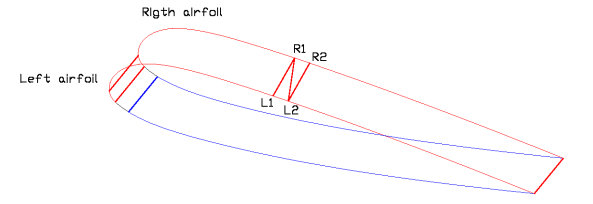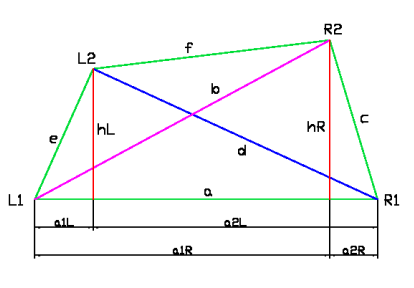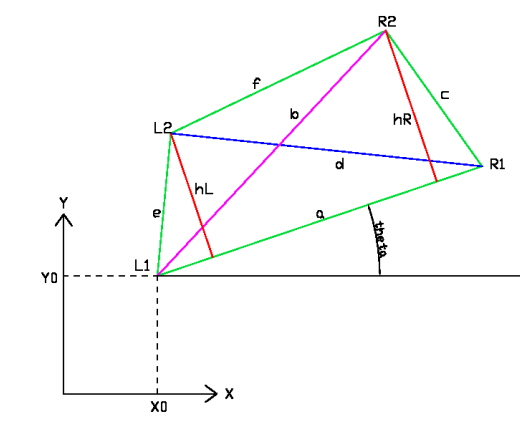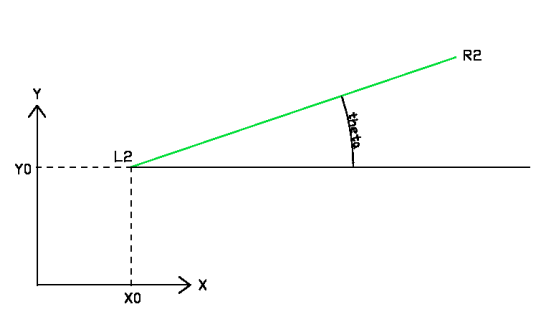This chapter describes the
mathematical method for the flat development of the upper and lower
panels of the cells.
Other designers use 3D modeling programs such as Rhino, 3dStudiomax ...
but Laboratori d'envol algorithm has developed a small algorithm, very
simple and giving the same, taken the airfoils in 3D directly from the
CAD program.
5.2 Description of the
LE method
1. The starting point is the 3D digital model of the paraglider with
the airfoils in their relative position as planned.
2. We take two consecutive airfoils, which we call airfoil L (left) and
airfoil R (right).
3. Each airfoil is divided into two curves (two 3D CAD polylines),
corresponding to the upper surface (between LE and TE) and the
corresponding to the lower surface (between LE and TE). Inlets are not
part of these curves.
 Fig 1: Upper and lower polylines of the airfoil
Fig 1: Upper and lower polylines of the airfoil
4. Take the upper left and upper right polylines, each of which is
composed of N points, where N is large enough. Are the points from the
initial definition of the airfoil. Running the CAD command "_list " on
the polyline we obtained the coordinates x, y, z of the N points, that
we copy to a text file, to be further processed by a subroutine.
5. The basic idea is to take 2 consecutive points on the left L1, L2
and right R1, R2 to form a quadrilateral. Then we divide the
quadrilateral (for one of its diagonal) into two triangles. We can
calculate the sides of the triangles, because we know the coordinates
of points. Then it is only required to develop the non planar
quadrilater in a plane, placing the two triangles on a plane,
articulated by the quadrilater diagonal. The error committed in the
process is small, because the points are close and quadrilaterals are
almost flat.
 Fig. 2: Two consecutive airfoils and reference points.
Fig. 2: Two consecutive airfoils and reference points.
6. Repeat above process with the following points: L2 and L3, R2 and
R3, and so on until the whole surface. The result is a flat surface
developed from triangles with overlapping sides.
 Fig. 3: Flat development
Fig. 3: Flat development
7. Repeat the process (4) with the L and R polylines of the lower
surface.
8. Repeat the process (2) with all consecutive airfoils of the half
wing.







